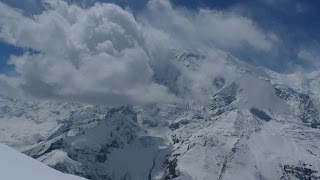I’ve been picking up skills in the jungle that I’d never even thought about learning.
For instance, we’ve all heard of how incredibly quiet and stealthy elves can be. I had a bit of a crash course in stealthy movement the other day actually with perhaps the best teacher that one can have - a wild rhinoceros. When you’re less than ten meters away, on foot, in the middle of nowhere, from a two ton animal that can run at 50km/hour and regularly attacks visitors to the area, you find that you’ve suddenly become a very stealthy person indeed. Your breathing slows down; each foot is softly and deliberately place on a spot on the ground carefully preselected for its absence of dried leaves or twigs; and all the while you’re intensely aware of the smallest movement or sound anywhere around you. Luckily the rhino saw and heard a lot less of us than we did of him. And my guide graciously decided to tell me all the terrible stories about people he knew who had been irreparably damaged in rhino attacks.
I also took a bit of time off to practice for my next battle with a war oliphant, although in a much more relaxed setting. I think I may just be the only with ‘elephant climbing’ on the skills section of my resume when I go for the part of an elf. Legolas would be proud.


















